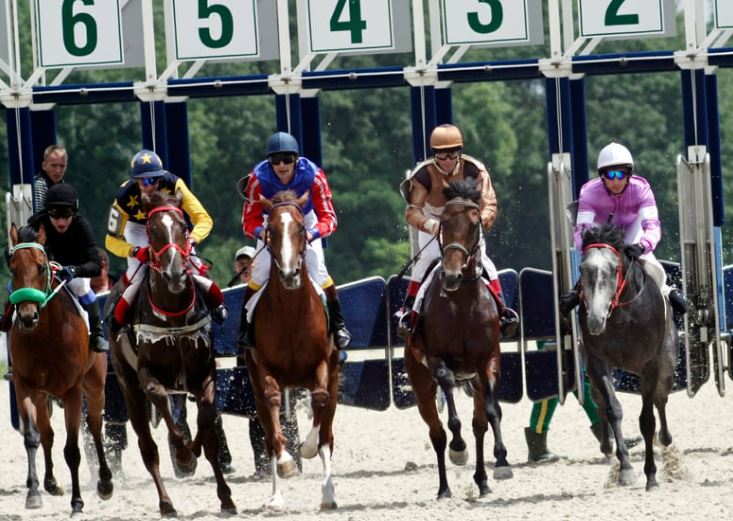Can You Bet on All The Horses In a Race?
Have you ever wondered if it is possible to place a bet on every horse in a race? The idea of backing all runners might seem like a way to cover different outcomes, but there are several factors to consider before attempting this approach.
Understanding how odds work and what the potential returns or losses could be is important. Horse racing in the UK provides multiple betting options, and while it is possible to bet on several horses, there is more to consider than the final result. Read on to learn more.
Betting on More Than 1 Horse: Is It Allowed?

It is possible to back more than one horse in a single race. Some bettors use methods such as dutching, where stakes are divided across multiple horses to target a similar return if one of them wins. This can increase the chance of having a winning selection, but it does not necessarily result in a profit.
The odds you choose and how you divide your stakes are important considerations. Bookmakers include a margin in the odds, so selecting multiple horses does not eliminate risk. Using a dutching calculator could help show the potential return and whether it covers your total stake.
If you do decide to try your hand at horse racing betting, remember to do so responsibly and within your means; never wager more than you can afford to lose.
How Many Horses Can You Bet on?
You can back as many runners as you wish in a single race. Each selection requires its own stake, so the total spend rises with every additional horse. Tools or calculators can help determine whether the potential returns are in line with the total amount staked.
If you have reviewed the race form, there may be no need to repeat the process for every selection. Notes on form, jockey, and conditions can assist in deciding which horses to include.

What Happens If You Bet on Every Horse?
Backing all runners, sometimes called covering the field, means one of your selections will be a winner, but it does not mean a net profit is guaranteed. Whether you make or lose money depends on the odds and the total stakes.
Bookmakers build in a margin, called the overround. Adding up the implied probabilities of all runners can show this margin. If the total is above 100 percent, the bookmaker’s margin may result in a situation where covering all horses costs more than the potential return.
For example, in a 10‑runner race, placing £1 on each horse results in a total stake of £10. If the favourite wins at 2.50 in decimal odds (6/4 fractional), the total return would be £2.50, resulting in a net loss of £7.50. If a horse with longer odds wins, the return could be higher than the total stake, but this depends on the price and distribution of stakes.
Dutching can help balance returns across multiple horses, but the bookmaker’s margin will still affect the total. For example, if the total implied probability is 118 percent, aiming for a return of £100 would require a total stake of approximately £118. Each-way bets involve additional cost because two bets are placed per horse, and place terms vary depending on race type and field size. Checking these terms could potentially assist in understanding potential returns.
Is It Legal To Bet on Every Horse In a Race?
It is legal in the UK to back all horses in a race. Compliance with the bookmaker’s rules is required, as each operator may have specific requirements for staking and bet placement.
Legality does not imply profitability. Reviewing odds, margins, and stake distribution could help provide clarity on the potential outcomes.
How To Bet on Multiple Horses In a Race
The process can be broken down into several steps.
- Choose the race and sign in to your account with a licensed UK bookmaker.
- View the race card to examine runners, prices, and any available notes.
- Shortlist the horses you may wish to back, using your research on form, jockeys, and conditions.
- Decide how to divide your stakes. You can place equal amounts on each selection or use a dutching approach to target a similar return across your picks.
- Add your selections to the betslip, enter the stakes, review potential returns, and confirm the bets if the amounts are acceptable.
Setting limits within your account could help manage the total amount staked. If the potential returns are not aligned with the stakes, adjusting the bet or abstaining from the race may be considered.
Backing multiple runners is permitted, but it does not provide certainty of profit. Understanding odds, bookmaker margins, and stake distribution might help assess potential outcomes. Always keep responsible gambling practises in the forefront of your mind.
**The information provided in this blog is intended for educational purposes and should not be construed as betting advice or a guarantee of success. Always gamble responsibly.
*All values (Bet Levels, Maximum Wins etc.) mentioned in relation to these games are subject to change at any time. Game features mentioned may not be available in some jurisdictions.

